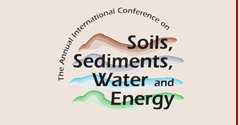Article Title
Remediation Of A Clay Contaminated With Petroleum Hydrocarbons Using Soil Reagent Mixing
Abstract
Soil reagent mixing (SRM) is a remediation technique whereby powder or slurried reagents are delivered and mixed in-situ or ex-situ with contaminated soils or sediments by augers or other types of soil mixers. This paper summarises the work carried out for a laboratory treatability study of SRM on clayey soil samples contaminated with petroleum hydrocarbon compounds from a petrol filling station site in Kent, UK. The study examined the effects of mixing binder reagents on the total soil and leachate concentrations of hydrocarbons. Quicklime, hydrated lime and ordinary Portland cement, in a number of different formulations, were used in the study. Furthermore, the addition of gypsum to some reagent formulations was evaluated in an attempt to improve the strength of the binder/soil mix. Temperature and evolution of volatiles were monitored during the mixing of soils with the reagents. The mixing of soil with binder reagents resulted in changes in physical and physico-chemical properties of the clay, and in significant decreases in total soils and leachate concentrations of petroleum hydrocarbon compounds. The mechanisms responsible for the decreases in concentrations were examined. Significant increases in the remoulded strength of the clay were observed upon addition of certain binder formulations.
Recommended Citation
Schifano, V. and Thurston, N.
(2010)
"Remediation Of A Clay Contaminated With Petroleum Hydrocarbons Using Soil Reagent Mixing,"
Proceedings of the Annual International Conference on Soils, Sediments, Water and Energy: Vol. 12, Article 27.
Available at:
https://scholarworks.umass.edu/soilsproceedings/vol12/iss1/27
